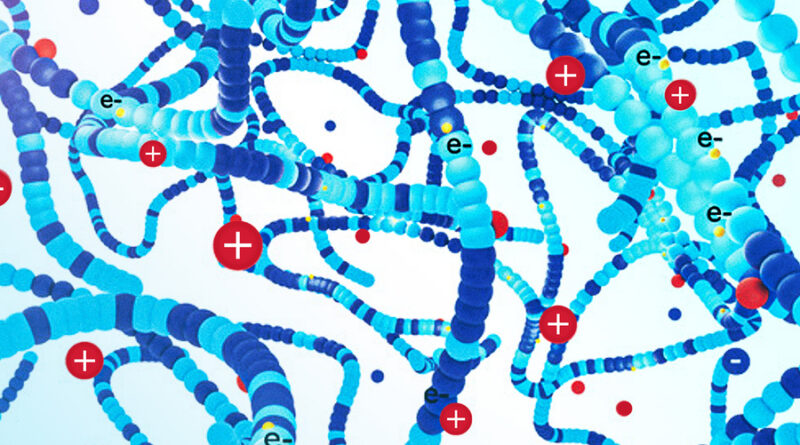MIT engineers developed organic polymers that can efficiently convert signals from biological tissue into the electronic signals
Cambridge, MA – MIT researchers developed a chemistry-based strategy to create organic iono-electronic polymers that “learn” and could improve electronic devices that interface directly with the human body.
Certain electronics that integrate with the human body — a smartwatch that samples your sweat, for instance — work by converting the ion-based signals of biological tissue into the electron-based signals used in transistors. But the materials in these devices are often designed to maximize ion uptake while sacrificing electronic performance.
To remedy this, MIT researchers developed a strategy to design these materials, called organic mixed ionic-electronic conductors (OMIECs), that brings their ionic and electronic capabilities into balance.
These optimized OMIECs can even learn and retain these signals in a way that mimics biological neurons, according to Aristide Gumyusenge, the Merton C. Flemings Assistant Professor of Materials Science and Engineering.
“This behavior is key to next-generation biology-inspired electronics and body-machine interfaces, where our artificial components must speak the same language as the natural ones for a seamless integration,” he says.
Gumyusenge and his colleagues published their results Friday in the “Rising Stars” series of the journal Small. His co-authors include Sanket Samal, an MIT postdoc; Heejung Roh and Camille E. Cunin, both MIT PhD students; and Geon Gug Yang, a visiting PhD student from the Korea Advanced Institute of Science and Technology.

